Oct 31, 2022
Organisational change and savings through the creation of Automation hubs in centralised technology platforms
Automation is a central component of most organisations’ digital transformation strategy today. While stakeholders at all levels are eager to reap the benefits of automation, synchronising, collaborating, and managing automation across all parallel automation initiatives is a significant challenge. If that sounds familiar, then your next step should be utilising an automation hub to manage the automation pipeline.
The case for business automation
Most business leaders today recognise that business automation, in all of its many forms, is not just a buzzword. In fact, it’s a genuine and influential part of digital transformation that helps businesses be more agile, faster, profitable, and competitive.
For many businesses, robotic process automation (RPA) is the embodiment of the promise of automation. RPA is the process of building, implementing, and deploying software bots that emulate human actions to automate repetitive, manual processes. However, other types of more advanced automation, especially intelligent automation (IA), are also gaining ground.
Most businesses today recognise the potential of automation. At least 53% have already started their RPA journey, and if the current trend continues, RPA adoption will be near-universal within five years. It’s easy to see why top performers in the implementation of RPA have seen a 4x ROI from their RPA investments, while the average business has experienced a ~2x ROI. What’s more, RPA benefits are most commonly felt in challenging yet increasingly vital business areas, such as compliance (38%) and productivity (27%).
It’s no wonder the potential economic impact of knowledge work automation is expected to be $5-7 trillion by 2025.
RPA, and other forms of automation, are vital because they help businesses operate more efficiently and do less with more. It’s estimated that 10-25% of employees spend their time on repetitive computer tasks, while IT departments spend 30% of their time on basic, low-level tasks. As a concrete example, businesses typically pay $5- $25 for manual invoice processing.
That’s a lot of waste in terms of time, money, and human resources. Today, 70-80% of these mundane, rule-based processes can be automated with trivial ease. As you can see, the problem lies less with being able to implement RPA solutions than with identifying the myriad opportunities for automation and managing the automation journey.
The challenge of affecting digital transformation through automation
The main problem for organisations looking to implement automation as part of their digital transformation is how broad it is. Most organisations have tens, if not hundreds, of potential use cases for RPA or other forms of BPA. Some are confined to specific teams or departments, while others are organisation-wide. Others may pertain only to a single enterprise app, while others span an entire tech stack.
There are so many types of business automation that it’s hard to track them all. For example, marketing automation, HR automation, accounting automation, process automation, and manufacturing automation, to name a few.
With so many potential opportunities for automation, the immediate problem is how to find and define automation use cases. This can be particularly challenging in large organisations with complex employee and managerial hierarchies. Understandably, C-suite executives may not be savvy to the immediate automation needs of ground-level manufacturing staff, for example, and vice versa.
So, the first problem to solve is the ability to create automation requests from both a top-down and bottom-up approach.
However, even when you identify a specific use case for automation, that opens up a whole other can of worms:
Where do you begin to implement all of these automation processes? How do you track your progress across all automation processes? How do you make sure all the relevant stakeholders are involved? How do you ensure compliance and collaboration to implement them efficiently and with minimal disruption? And, more importantly, how do you determine whether a specific automation process was successful?
Depending on the organisation’s size, digital maturity, and internal automation expertise, the lack of oversight can be a significant stumbling block on the road to large-scale automation. Clearly, organisations need some platform to centralise and manage the entire automation journey.
What is an automation hub?
The goal of an automation hub is to help streamline and accelerate the adoption of process automation initiatives. It facilitates every step of the journey of adopting a new automated process, from ideation to planning to implementation to validation. It allows all stakeholders, including end users, automation experts, developers, and decision-makers, to collaborate on the automation process.
We’ll cover everything that an automation hub does in-depth below, but it broadly consists of three main facets:
- Collaborative process identification
- Automation pipeline management
- Process repository tools
In a way, these tools and features allow the automation of the automation adoption process. As the name suggests, it’s a one-stop, centralised, collaborative “hub” for managing all automation processes. It’s a single point of contact between all individuals involved in creating and using new automation initiatives. This includes business users (e.g., employees), developers, project managers, CoE (Center of Excellence) teams, and automation experts.
What does an automation hub do?
By looking at its actual capabilities, it may be easier to understand precisely what an automation hub does. While the range and depth of capabilities may differ from vendor to vendor and system to system, they generally offer the following essentials:
- Process Identification: Allows users (managers, employees, dedicated automation staff) to share ideas or requests for automation via a collaborative process.
- Pipeline Management: Map the entire roadmap and plan for a specific automation process. Define the expected cost, lead time, and benefits and track its progress in a single dashboard.
- Process & Documentation Bank: Store all documents and assets related to a specific automation process candidate in a single, centralised repository.
- Integration with Task Capture: Task capture tools streamline and improve communication between your automation experts and RPA developers. Automation or subject matter experts can specify best practices and suggestions as a process definition document or workflow diagram for developers to implement.
- Marketplace: Establish an organisation-wide marketplace of reusable components in a private repository. Users can create, store, find, and install components on an as-needed basis at any place, any time, anywhere.
- Gamified RPA Change Management: Support and motivate team members through the automation process using long-term engagement strategies. Clearly track progress and keep the focus on the next and most important milestones in the automation journey. Some gamification systems go as far as to allow you to implement points, badges, or ranking systems.
One important facet of most automation hub systems is that they encourage and facilitate collaboration through every step of the process. Users can share automation requests or ideas, action them, and provide feedback through voting systems or open-ended feedback mechanisms. The automation hub also maintains a single source of truth for all assets and information related to the automation process so that everyone is on the same page.
What are the benefits of an automation hub?
Everyone involved in the use, implementation, deployment, or effects of automated processes stands to benefit from the use of automation hubs:
- Business users:
- Discover, submit, and collaborate on automation ideas
- Manage automation opportunities in one place
- Share subject matter expertise to inform the automation process
- Increase ROI with automation process prioritisation
- Maximise the impact of internally developed automations
- Leverage existing automations
- CoE (Center of Excellence) leaders:
- Identify what to automate as well as why, when, and how to automate it
- Manage automation process pipelines
- Ensure that automation is successful according to pre-determined metrics
- Prove the positive impact of automation to leadership
- Citizen developers:
- Build automation with clear specifications in mind
- Easily build and share personal time-saving automations
- Ensure that you build CoE-approved automations
- Easily kick off, manage, collaborate on, and deploy automation projects
The net result will be fewer headaches for your organisation when implementing automation initiatives. Not to mention deploying automation solutions that are fit for purpose and meet the objectives of your boots-on-the-ground employees and high-level decision-makers.
One of the greatest benefits of an Automation hub is the capability to store and re-use assets. Whilst this especially beneficial for multi stream test activities such as regression testing across multiple teams/projects, further benefit and efficiency gains can be obtained through the re-use of these assets in areas outside of traditional test activities.
These can include Robotic Process Automation (RPA), DevOps and environment operations, data generation and validation, and standards conformance validation to name some examples. The ability to store and re-use these assets can contribute to not only overall effort reduction but lead to significant cost savings as well as quality increase through standardisation. In addition, the storage of such assets can also enable greater velocity, in effect providing a mechanism enabling a ‘test on demand’ function.
The test automation tools market to date has been focussed on test automation in isolation, however with greater emphasis being placed on interoperability and re-use of assets to drive automation as an outcome, tools vendors are researching and developing mechanisms to enable holistic automation capabilities.
Traditionally this has been focussed at the integration layer, enabling diverse tools to ‘talk’ to each other, however UiPath (a recognised leader in RPA) has taken this further by focussing on Intelligent Automation as a whole of business enabler.
This has led to the market leading development of an integrated tool suite that enables Automation hubs to develop and share assets across activity streams – whether that is RPA, testing, or other forms of intelligent automation such as Intelligent Document Processing, Process mining and Task Capture. As UiPath state, ““Bill Gates used to talk at Microsoft about a computer in every home. I want a robot for every person.” Daniel Dines, CEO
Organisation Automation Potential
While the potential of implementing organisation-wide automation is nearly infinite, substantial obstacles exist. The best way to improve your chances of success is to rely on a proven digital transformation partner with experience in automation. This is especially true if you want to take automation to the next level by evolving toward intelligent automation.
If you are interested in learning more about our Intelligent Automation services, contact us for more information.


